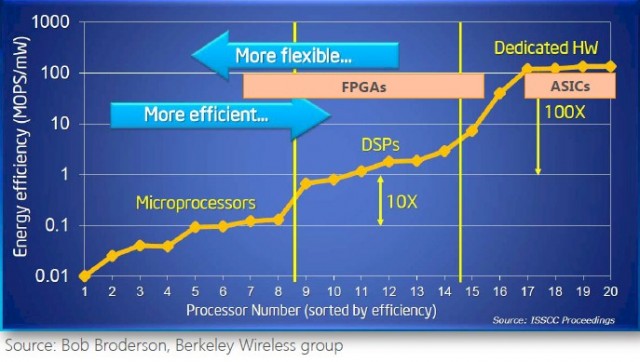Folklore #5: High Power CPU Is Better Than XXX Branded DAC Chip
With the advent of computer players we are seeing more and more examples of people saying high power (i5, i7s and Xeons) or FPGAs are better than the Digital to Analog Convertor (DAC) chips of old.
This claim is debatable, there are certainly some cases where this statement is true.
All processors work the same way at it's most basic level- it recognises 1s and it 0s. The difference is the kind and type of operations each type can perform on these binary stream. There are trade offs between power consumption, calculation speed and flexibility as you look across the board.

Computer Processing Unit (CPU) from makers like Intel and AMD are what we call General Purpose Processor. These chips power the computers we use today. It has the largest instruction set, is capable of having the most applications, are highly adaptive and can be customised to perform jobs like playing games, word processing, internet web browsing and more. The downside is the high power requirements (to power all the extra transistors).
The complexity reduces as you move from CPU (most complex) → FPGA (somewhat complex) → ASIC (least complex). There are a lot less components in the ASIC when compared to the FPGA. There are so many components in a general CPU, and packed so tightly we need a heat spreader over it to conduct heat away.

Field Programmable Gate Array (FPGA) sits in the middle of the pack. The simpler nature of the FPGA strikes a balance of sort - enough specialisation to be useful (FPGAs are much better in executing parallel tasked problems than traditional CPUs), and flexibility (like CPUs, FPGAs can be reprogrammed for different applications). FPGA accepts input, process that input internally and spit out an output.
Application Specific Integrated Circuit (ASIC) is the direct opposite of a CPU. This is also the most inflexible architecture in the three because it is non-programmable. A fixed circuit, all the functionalities are baked into the design and cannot be changed. The simplest architecture of the three results in sheer speed. While the cheapest to manufacture, one can argue they are probably the most expensive to design. Like FPGA, ASIC accepts some form of input, process that input internally and spits out the output. This is the most specialised of the three and is designed to perform very limited tasks. A DAC chip (e.g. the TDA1541) is ASIC.
FPGA can be programmed to behave like a DAC (In fact people use FPGA for prototyping ASIC). FPGA gives us the flexibility to implement a DAC, plus the ability to adapt to new input streams in the future (future proofing). The inflexibility and high development costs of ASIC now placed it at a huge disadvantage compared to FPGA.
Computers, being "too general purpose" cannot do digital to audio conversion on it's own. Today computers are used in tandem with a DAC to add additional horsepower processing when playing back digital audio (e.g. filtering, real time PCM to DSD conversion, etc).
The following illustration explain the general differences between the three types, graphically representing the trade off relationships between "usefulness" vs "power efficiency". Over the years though the lines have blurred.

Engineers have miniaturized the transistors on general CPUs and FPGA (to 12 nm and lower) and upped the clock speed - these updates improve the power consumption and speed, bridging the gap of both architectures closer to ASIC ever closer. We are now living in a world where CPU and FPGA have bridged the gap and moving ever closer to the speeds and power consumption of ASIC.
For whatever reasons the audiophile community is now embracing FPGA and general purpose processors as being superior over DAC. FPGAs are usually costly than DAC; general purpose processors allow people to manipulate digital audio, both traits give people the impression they are (or can be) better. Traditional ASIC solutions is now the poorer cousin but there really is no practical reason for this.
The truth is none of them is no better or worse than the other, ultimately it all boils down to the implementation.
[adsense:][pagebreak]If one has to postulate, a DAC chip being a specialised circuit and designed from the ground up for a purpose should be the best performing of the three. After all it is designed to do one job, and one job only - digital to audio conversion.
Things are never that simple. And it is entirely possible that a DAC can totally suck at doing that one single job.

At the end of the day, It is not a given that FPGA and CPU will automatically be better than DAC. Functionality will dictate your solution:
- FPGA and/or CPU when you need pre or post processing besides pure digital to analog conversion
- FPGA implementation over traditional DAC as the former can be firmware upgraded to support new formats
- DAC when you do not need the bells and whistles.
Personally I'm choosing the DAC route. There are good redbook. PCM and DSD materials, as there are bad ones. Instead of using FPGA and CPU slutions to make all music sound better, I'm playing music ranging from the very good to the extremely bad. This is me, personally I cannot appreciate the good without knowing the bad.
[adsense:]


Add new comment